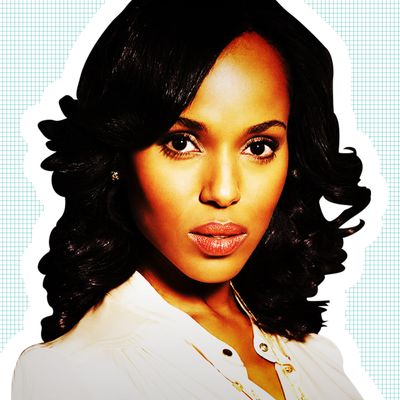
In the middle of the summer, I received an email from Michaela Hammond, a marketing director at a sports-management firm who I had never met. She had seen a news item I’d written about Ursula Burns, the first black woman CEO of a Fortune 500 company, stepping down from her role at Xerox. She explained her concern: “As a young woman of color who went to business school, the lack of people to look up to is astounding,” she wrote. “I attend a lot of industry events and conferences and am consistently amazed by the lack of diversity in the room.”
Hammond wanted to brainstorm ways for our site, and the media at large, to highlight women of color “in leadership positions or executive tracks at companies across finance, consulting, Fortune 500 companies, sports, media, and advertising,” as a way to inspire other women of color to excel in those industries, and to realize that they weren’t alone. The solution we came up with together was to coordinate an intimate group of women across those fields to come to dinner in New York, where grievances could be aired and action items could be discussed. On a Tuesday night at Jack’s Wife Freda on the West Side of Manhattan, the consistent theme of the discussion was made clear by Bianca Caban, managing partner at the global investment holdings company Taino Capital, “We have more ambition and less opportunity.”
The night was a two-and-a-half-hour evening of conversation between the seven women — who work in sports, finance, media, advertising, and tech — and it touched on everything from challenges to triumphs to success stories to mentorship to the persistent question, raised by Amel Monsur, executive creative director at Vice Media, “When will the people we work with allow us to transcend our race?” and furthered by Farah Sheikh, project manager at Squarespace, who added, “Am I just not qualified to be in this meeting?”
Among the women at the dinner were Ashley Blackwood, a sports publicist working for Judy Smith, who was the inspiration for Olivia Pope; Marah Lidey and Naomi Hirabayashi, founders of Shine Text; Sheikh; Hammond; Monsur; and Caban; as well as the Cut’s Ashley Weatherford and Lindsay Peoples.
“All women of color are leaving corporate America in droves, but women-of-color-founded businesses are the fastest growing group among new business owners,” Hammond said. Lidey and Hirabayashi, two female founders themselves, pointed out that one of the challenges in that respect was that, as Lidey said, “The V.C. world is dominated by white men. It’s changing but it’s going to be a slow change. We’re dealing with gender and we’re dealing with race.”
Though 100 percent of the women at dinner agreed that more diversity in every industry would only make those industries healthier, there were many reasons for why they believed white male business leaders weren’t as inclined to diversify. Sheikh noted it was almost an empathy problem: “There isn’t a basic level of trust,” she said. “You walk into a room and you’re the one person who doesn’t look like anyone else there. People don’t know where you came from, what your values are, what you grew up eating for dinner every night.”
To this point, Monsur rose the idea of an ecosystem as an example. “Why does an ecosystem thrive biologically? It thrives biologically because there are variants in the things that grow, and then when they meet, they make stronger things together. They put out all these elements into they air. You cannot just have a wheat field. You cannot just have a grass field. Companies need to ask themselves, ‘How healthy is our ecosystem?’”
In a way, this kind of unhealthy ecosystem has only pushed women of color to be more ambitious, Blackwood said. “Over the years I’ve adapted to the environment I’ve been put in.”
“Each and every one of us is a unicorn, just by being who we are. There is nothing that you can compare us to,” Caban responded. “There’s no benchmark for us. What is the benchmark? Is it white women? Is it men of color? Is it white men?”
Many of women put forward stories about the so-called “concrete ceiling.” If they were given the opportunity to succeed, they would go after it, but the barriers to entry were endless.
So what kind of action items need to be tackled in order to reduce the biases women of color face in their careers? Lidey, for one, suggested that each woman go back to their high schools as a way to inspire future generations of young women. “If you think about what that would have been like for you, it would have make a difference. If one young woman in your middle school or high school could see who you are, it would make a much bigger difference than the experiences we had.”
Caban enthusiastically agreed, “See it. Be it.”
One point that was agreed upon by all was that it’s important to think about how to tailor your advice to the right people. “The generation above us gives us advice based on what their experience was, instead of what our experience is,” Sheikh explained. “I think we need to be asking people younger than us, what do you need advice on? How can I help? We need to change the narrative of how we are mentors to those people. Nobody ever asks you what it is you might need to succeed. They just tell you.”
At the end of the night, at around 9:45 p.m. — it was a Tuesday, after all — the discussion wasn’t over, but the restaurant din was dying down. Out on the street, a photo of the group standing together was taken and promises of holding another dinner were exchanged. As Hammond had said earlier, “Maybe it’s time we started a coalition.”




